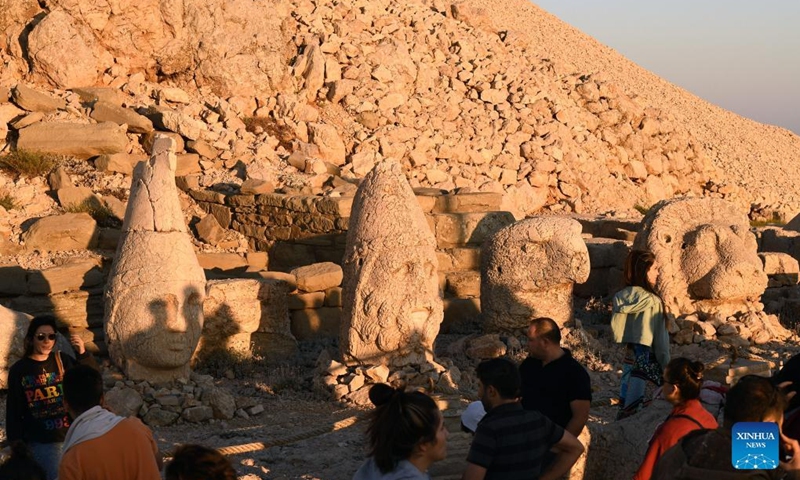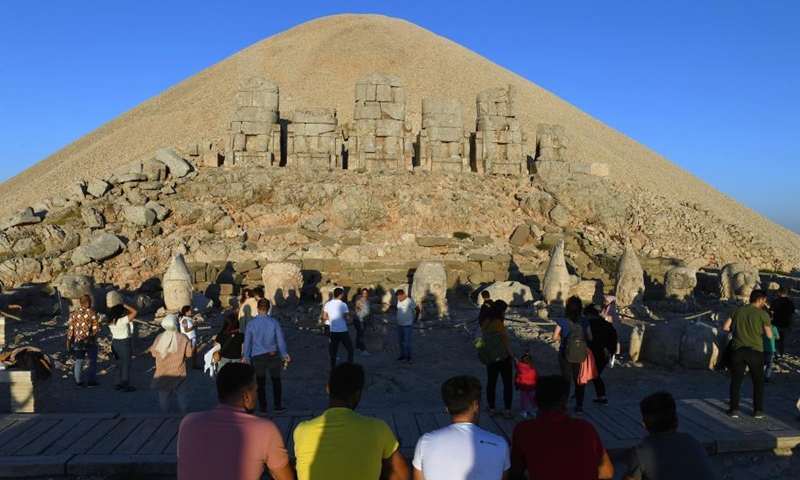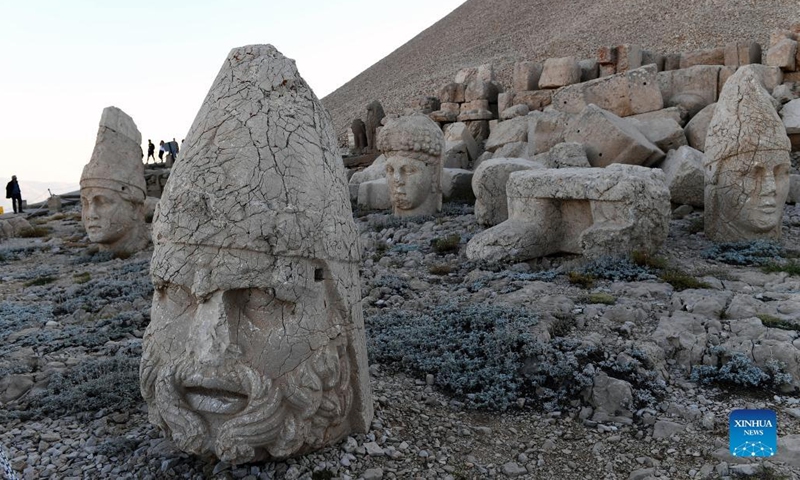
People visit the tomb-sanctuary on Mount Nemrut in Adiyaman Province, Turkey, on June 7, 2022. Mount Nemrut (Nemrut Dag) was inscribed on UNESCO World Heritage List in 1987. On Mount Nemrut, the mausoleum of Antiochus I, who reigned over Commagene, a kingdom founded north of Syria and the Euphrates after the breakup of Alexander's empire, is one of the most ambitious constructions of the Hellenistic period.(Photo: Xinhua)

People visit the tomb-sanctuary on Mount Nemrut in Adiyaman Province, Turkey, on June 7, 2022. Mount Nemrut (Nemrut Dag) was inscribed on UNESCO World Heritage List in 1987. On Mount Nemrut, the mausoleum of Antiochus I, who reigned over Commagene, a kingdom founded north of Syria and the Euphrates after the breakup of Alexander's empire, is one of the most ambitious constructions of the Hellenistic period.(Photo: Xinhua)

People visit the tomb-sanctuary on Mount Nemrut in Adiyaman Province, Turkey, on June 7, 2022. Mount Nemrut (Nemrut Dag) was inscribed on UNESCO World Heritage List in 1987. On Mount Nemrut, the mausoleum of Antiochus I, who reigned over Commagene, a kingdom founded north of Syria and the Euphrates after the breakup of Alexander's empire, is one of the most ambitious constructions of the Hellenistic period.(Photo: Xinhua)

People visit the tomb-sanctuary on Mount Nemrut in Adiyaman Province, Turkey, on June 7, 2022. Mount Nemrut (Nemrut Dag) was inscribed on UNESCO World Heritage List in 1987. On Mount Nemrut, the mausoleum of Antiochus I, who reigned over Commagene, a kingdom founded north of Syria and the Euphrates after the breakup of Alexander's empire, is one of the most ambitious constructions of the Hellenistic period.(Photo: Xinhua)
